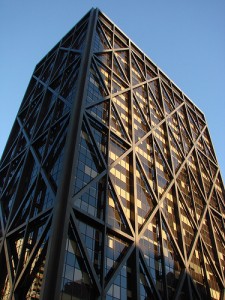I came to San Francisco in 1976 to work for Botsford-Ketchum Advertising. Ken Dudwick was the Executive Creative Director.
So was Bill, his dog.
Bill was a friendly, miniature white poodle who simply adored Ken. He would follow on Ken’s heels wherever Ken went. He was smart, extremely obedient and did whatever was commanded. He came to work with Ken – everyday.
Now as much as I liked the “San Francisco” look and feel of my new offices with their open interior, high beamed-wood ceilings, brick walls laced with steel earthquake girders and the hanging ferns, I have to confess I wasn’t accustomed to the slower pace or the laid-back style of working. So, having just come from a more staid and formal Midwest office environment, it would then probably come as no surprise that although I was a dog lover, I felt bringing a dog to the office crossed the line – no matter how laid back.
One day, a group of us met in Ken’s office to present some TV commercial ideas for one of the clients. It was a new campaign and Ken was looking for the “big” idea. We scattered ourselves around his office on a long couch and various chairs. As usual, Bill wandered over for a few head pats and then went to his corner to lie down. Ken sat at his desk as each art director/writer team presented their TV storyboards and explained the campaign idea to him. He rejected one idea after another for various reasons. None of us, in Ken’s mind, had a break-through.
The last presenter was one of the senior art directors. After explaining the idea, he handed his laboriously illustrated storyboard to Ken so he could get a closer look. Ken studied it and also gave it the thumbs down. He tossed the storyboard on the pile of previously rejected boards lying on the floor next to his desk. He jumped up from his chair, said he would be right back, and headed off to the men’s room. Bill immediately got up from his spot in the corner of the office and began to follow Ken. Ken turned and told Bill to wait. Bill stood at the door and watched anxiously as Ken walked down the hall. As soon as Ken was out of sight, Bill walked over to the storyboard, bent his head down, moved it from side-to-side as if he were reading, and then proceeded to throw up on the storyboard.
The art director’s face color went from shock white to kill Bill red as our collective mouths dropped and as Gasper Patrico, one of the writers, ran off to get paper towels to clean up the mess.
No one laughed at the time, but it’s just further proof that in the advertising business rejection comes in all forms.
About three years after I left Ketchum, I attended a bachelor’s dinner at a Japanese restaurant for my former art director partner Dave Sanchez who still worked at the agency. Ken Dudwick was also invited. He arrived a little late and squeezed in next to me at the only open space.
After he greeted several people who were sitting around the table, Ken and I proceeded to engage in small talk about the accounts I worked on at my present agency, Foote, Cone & Belding, and some of the people we knew in common.
As I mentioned earlier, my Midwestern mentality found it hard to accept someone bringing a dog to the office. So here I was three years later sitting next to the man who is always with his dog and thinking with a little bit of sarcasm, “Humph, I’m surprised he didn’t bring his dog to the restaurant.”
I couldn’t resist. I just had to ask. I turned to Ken and said, “So, where’s Bill?” Without blinking an eye or losing a beat while picking up a piece of sushi with his chopsticks, Ken nonchalantly replied, “Bill? Oh he’s waiting in the car. He doesn’t like Japanese food.”




